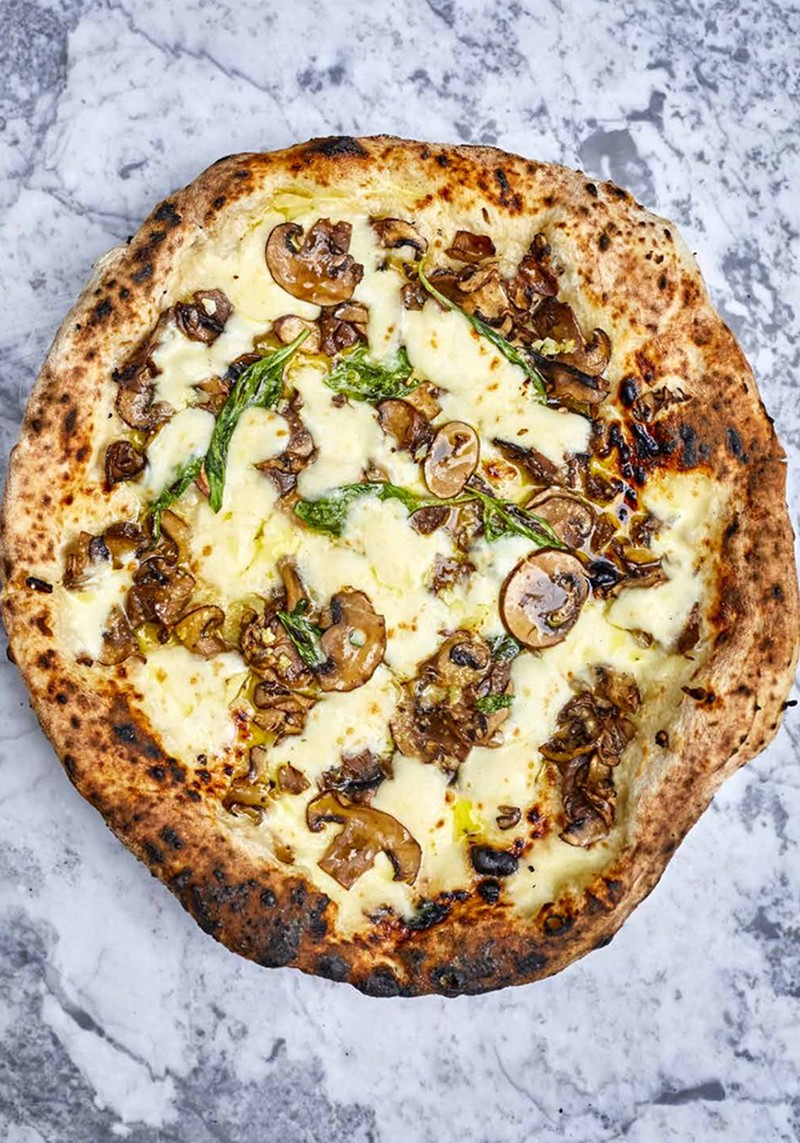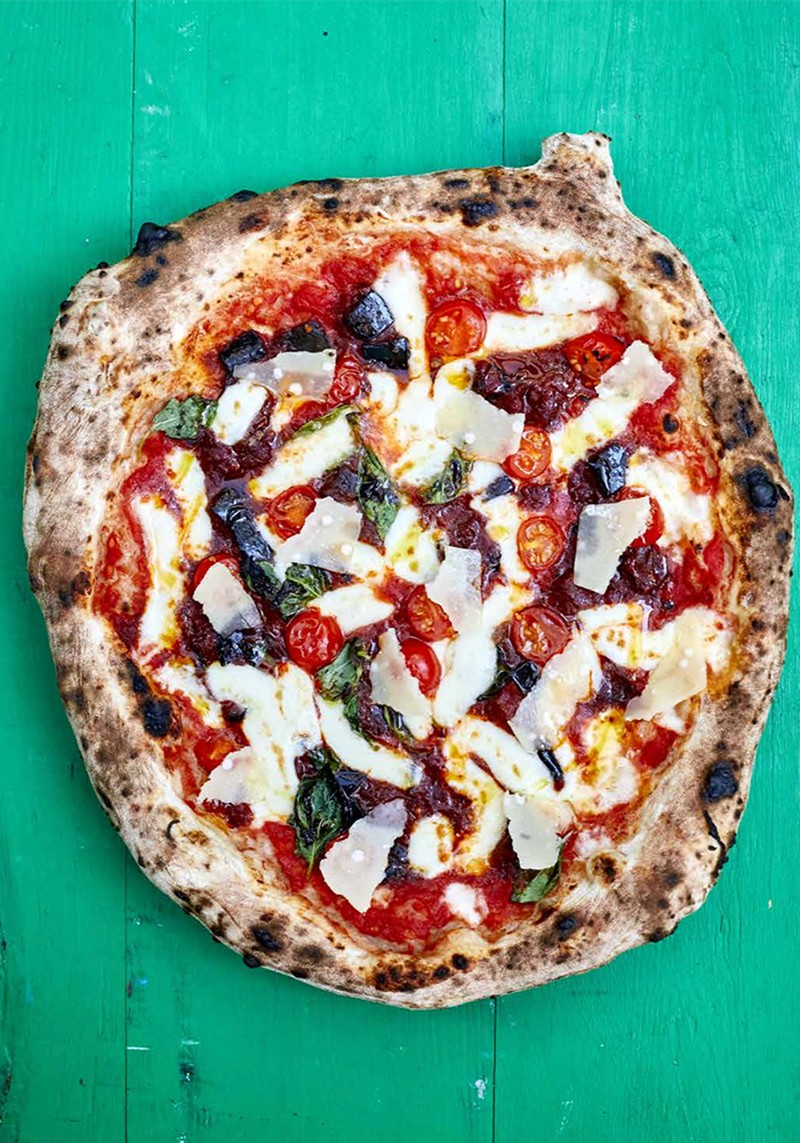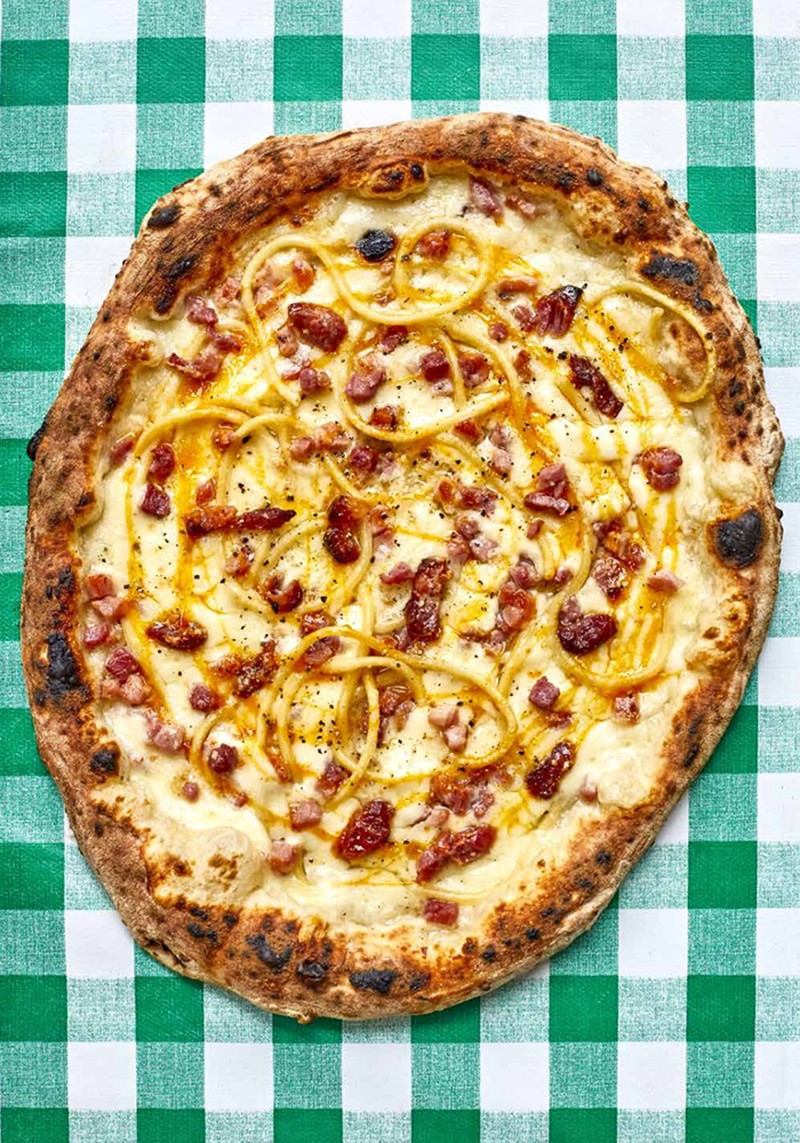
How To Make Great Pizza At Home
Pizza is special. There is just something about the combination of dough, cheese and tomatoes – plus the fact that pizza is round, eaten with your hands and therefore made for sharing – that makes humanity gravitate towards it. Or, since the invention of home delivery, makes the pizza gravitate towards us. Pizza is also central to so many cultural touch points: from movies, to books, to television and even sports. Whether via online videos, corporate sponsorship, character development or plot point, pizza permeates them all.
There’s always something new to learn. Once you start to work with the product itself you see the reasoning behind this. We now have numerous pizzerias across London and have been working with Neapolitan pizza chefs for almost a decade. Every single chef we meet has a connection with pizza at a fundamental level, even the ones who have been doing it for many, many years still see themselves as students. There is always something something new to try and something new to teach. Write off pizza as a simple dish at your own peril.
A pizza pilgrimage never ever ends. We set off on our pilgrimage in our three-wheeled van in 2011, but we've realised it's a totally subjective medium – everyone has their own favourites, recommendations and opinions. Below are just three of ours…
How To Make Pizza Dough
Makes eight 10-inch pizza bases – each base is technically for one, but it’s great sharing food.
Tip the flour onto your work service and make a well in the centre. Dissolve your yeast in the water and pour into the middle of the well a little at a time whilst using your hands to bring the walls of the flour in so that the water begins to thicken. Once you’ve reached the consistency of custard, add the salt and bring in the rest of the flour until it comes together as a dough. Knead for 10-15 minutes.
Cover and leave to rest for 10 minutes before kneading again quickly for 10 seconds (this helps to develop the flavour and the gluten).
Divide the dough into 200g balls and leave to rest overnight or for at least 8 hours (24 hours is optimal, 48 hours maximum) in a sealed container or a deep baking dish sprinkled with flour and covered in cling film. Remember to leave space for each of your dough balls because, as the gluten relaxes, they will spread out to take up twice the diameter that they do initially.
When you’re ready to cook, scrape a dough ball out of its container using a spatula and as much flour as you need to ensure it doesn’t stick. The rounder the dough ball comes out, the rounder the final pizza base.
Put the dough ball onto a well-floured surface (honestly, if you are going to get serious about pizza making, get used to having flour play a large part in your life).
Using your fingertips, press out the dough ball firmly, starting at the centre and working out to the edge. Ensure you leave a centimetre around the rim of the pizza untouched.
Turn the dough ball over and repeat the pressing out process on the other side.
Using the palm of your hand, do one firm push in the centre of the dough ball to ensure the thickness of the base is consistent (not counting the raised edges).
Take the newly flattened dough ball on the back of your hands, ensuring the weight is on your knuckles and that your fingertips and nails are not going to poke a hole in the dough.
Using the back of your hands, stretch the dough out as far as you can without tearing it (now there’s a challenge). Turn the dough through 90º and repeat this stretching. Do this a few times.
You should now have a disc of dough around 10 inches in diameter, consistently thin but with a slightly thicker rim. We are ready to cook.
Inspired? Here are three tasty recipes to try at home…

Roast Mushroom & Truffle
One of the great Italian flavour combinations is mushroom and truffle. We used to serve this pizza simply using thinly sliced mushrooms, like most pizzerias. But we wanted a deeper mushroom flavour, so we developed a technique of roasting the sliced mushrooms in the oven with olive oil, garlic, pepper and salt. Lots of mushroom liquor, which is full of flavour, runs out of the mushrooms so we use a little pizza flour to thicken the liquid to create an intensely flavourful mushroom ragu that we spoon over the base. Once cooked, we top it with a drizzle of white truffle oil from Alba.
First make the mushroom mixture by heating the olive oil and garlic gently in a saucepan. Allow the garlic to turn golden before adding the sliced mushrooms and salt. Fry until the mushrooms have softened and their liquid has been released.
Take off the heat, tilt the mushrooms to one side of the pan and collect the mushroom juices in the other side of the pan. Stir the flour into the liquid until smooth and put back on the heat. Stir continuously until you have a thick liquor coating the mushrooms. Leave to cool.
Preheat the grill to its absolute highest setting, and place a large, ovenproof frying pan over a high heat and let it get screaming hot.
Meanwhile, flatten and stretch the dough ball to make a 10-inch pizza base.
Lay the pizza base flat in the hot, dry frying pan, then spread with some mushroom mixture. Top with the basil, a grating of parmesan and the olive oil.
Once the base of the pizza has browned, about 1-2 minutes, add the mozzarella, then place the frying pan under the grill on the highest shelf.
Once the crust has taken on some colour, about 1-2 minutes, drizzle with the truffle oil and eat.

Aubergine Parmigiana
We wanted a pizza on the menu that would be both vegetarian and a real comfort food hit. The one dish that makes all our pizzaioli go weak at the knees, except pizza, is aubergine parmigiana. So, we put it on a pizza.
First, toss the aubergine cubes in salt in a colander set over a bowl and leave for at least an hour. Preheat your oven to 250°C/Gas mark 10.
Add your garlic and olive oil to a large, ovenproof saucepan and place over a medium heat. Slowly cook until the garlic is golden brown.
Dry the aubergine cubes with a clean cloth, then add them to the pan and cook until the aubergine has softened.
Stir in the tomato paste and cook for a further 3 minutes, then add the canned tomatoes and water. Place in the hot oven (with the lid off), stirring occasionally for 30-40 minutes until the sauce has reduced and the aubergine is soft and tender. Season with salt and pepper to taste and leave to cool.
Preheat the grill to its absolute highest setting, and place a large, ovenproof frying pan over a high heat and let it get screaming hot.
Meanwhile, flatten and stretch the dough ball to make a 10-inch pizza base.
Lay the pizza base flat in the hot, dry frying pan, then spread over 100g of the aubergine parmigiana. Top with the basil, a grating of parmesan, the tbsp of olive oil and cherry tomatoes.
Once the base of the pizza has browned, about 1-2 minutes, add the mozzarella, then place the frying pan under the grill on the highest shelf.
Once the crust has taken on some colour, about 1-2 minutes, finish the cooked pizza with the parmesan shavings and a drizzle of olive oil.

Carbonara
We wanted to pay homage to this pasta heavy-hitter by creating its own pizza cousin. Carbonara pizza had been done before but in a very anglicised way, with cream and cooked ham... We wanted to stay true to the authentic traditions, which means using guanciale (cured pig’s cheek) and, of course, no cream. This pizza caused some scandal with our customers. Pasta on pizza is a pizza purist’s no-no, but we found ourselves between a rock and hard place – be authentic to carbonara pasta or be authentic to pizza. It really came down to tasting, and carbonara pizza with bucatini pasta on top is definitely better... but we do offer it with no pasta to keep everyone happy.
Preheat the grill to its absolute highest setting, and place a large, ovenproof frying pan over a high heat and let it get screaming hot.
Meanwhile, flatten and stretch the dough ball to make a 10-inch pizza base.
Lay the pizza base flat in the hot, dry frying pan then drape over the pasta (reserving a few strands). Top with a grating of parmesan, the mozzarella, guanciale and the olive oil. Add a few more strands of pasta, then drizzle the whole pizza with the egg yolk.
Once the base of the pizza has browned, about 1-2 minutes, place the frying pan under the grill on the highest shelf.
Once the crust has taken on some colour, about 1-2minutes, generously season with lots of black pepper and eat.
Pizza by James Elliot and Thom Elliot is available to buy here.
Visit PizzaPilgrims.co.uk
DISCLAIMER: We endeavour to always credit the correct original source of every image we use. If you think a credit may be incorrect, please contact us at info@sheerluxe.com.


